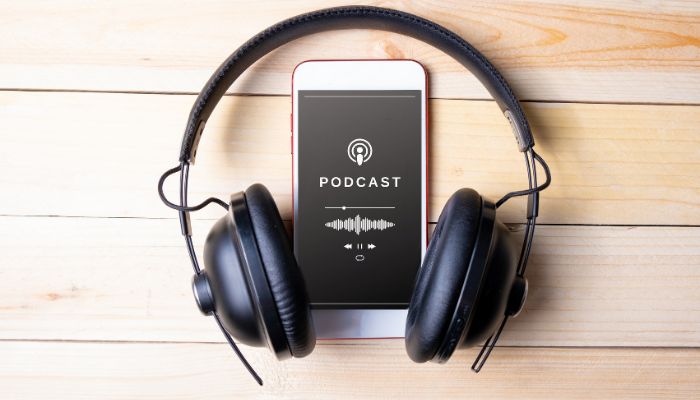In the ever-expanding universe of digital media, podcasts have emerged as stars, captivating audiences with their accessibility and personal touch. Spotify, recognizing this ascent, has become a hub for podcast enthusiasts and creators alike. For those looking to launch a successful podcast, understanding the nuances of content creation, audience engagement, and platform-specific features is key.
Summary
ToggleUnderstanding the Podcast Phenomenon on Spotify
Spotify’s foray into podcasts has transformed the platform into a powerhouse for audio content. With its algorithmic recommendations and seamless user experience, Spotify provides podcasters with a fertile ground to grow their listener base.
Content Creation: The Foundation of Your Podcast:
- Niche Selection: Begin by identifying a niche that resonates with you and has an audience on Spotify. Whether it’s true crime, self-improvement, or tech insights, your passion for the subject will drive the podcast’s authenticity and appeal.
- Content Planning: Map out your content strategy. This includes outlining episodes, researching topics, and creating a content calendar. Consistency is crucial, so plan your release schedule to keep listeners engaged and anticipating more.
- Quality Production: Invest in good recording equipment to ensure clear audio quality, as poor sound can deter listeners. Additionally, familiarize yourself with editing software to polish your episodes, removing unnecessary pauses or background noises.
Building Your Podcast Brand:

- Distinctive Branding: Your podcast’s name, logo, and cover art should capture the essence of your show and be easily recognizable. A strong visual identity helps your podcast stand out in Spotify’s crowded marketplace.
- Engaging Show Format: Decide on a format that suits your topic and style, whether it’s solo commentary, interviews, or storytelling. An engaging format will keep listeners coming back.
- Compelling Intros and Outros: Craft intros and outros that hook your listeners. A catchy intro sets the tone, while a memorable outro can include calls to action, such as asking listeners to follow your podcast or share it with friends.
Launching Your Podcast on Spotify:
- Optimizing for Spotify: When you’re ready to launch, ensure your podcast’s metadata is Spotify-friendly. Use relevant keywords in your title and description to improve discoverability.
- First Impressions Matter: Launch with a few episodes, so new listeners have more content to engage with from the start. This can also help your podcast appear more established and encourage binge-listening.
- Leverage Spotify’s Tools: Utilize Spotify’s promotional tools, like Spotify for Podcasters, which provides analytics and insights into your audience’s demographics and listening behaviors.
Promotion: Spreading the Word About Your Podcast:
- Social Media Integration: Share your podcast on social media platforms to reach potential listeners. Create shareable content, such as audio snippets or quotes from your episodes, to pique interest.
- Collaborations and Cross-Promotions: Collaborate with other podcasters or influencers in your niche for cross-promotion. Guest appearances can introduce your podcast to new audiences.
- Listener Engagement: Engage with your listeners through interactive segments, Q&A sessions, or social media. Building a community around your podcast can lead to higher retention and growth.
Growing and Monetizing Your Podcast on Spotify

Expanding Your Reach:
- SEO for Podcasts: Just like any content on the internet, your podcast can benefit from search engine optimization. Use relevant keywords in your episode titles and descriptions to improve visibility on Spotify’s search engine and beyond.
- Leverage Listener Reviews: Encourage your audience to leave positive reviews and ratings. High-rated podcasts are more likely to get featured in Spotify’s recommended sections, such as the podcast homepage or genre-specific lists.
- Utilize Analytics: Dive into Spotify’s podcast analytics to understand your audience better. Look at listener demographics, episode retention rates, and popular episodes to tailor your content to what your audience loves most.
Engagement Strategies:
- Interactive Content: Incorporate interactive elements into your podcast, such as listener polls, Q&A sessions, or live call-ins. This not only engages your current audience but also makes your podcast more attractive to new listeners.
- Community Building: Create a community around your podcast by starting a Facebook group or Discord server. This can be a space for listeners to discuss episodes, provide feedback, and connect with each other.
- Consistent Listener Communication: Maintain open lines of communication with your audience through regular updates, behind-the-scenes content, and responsiveness to comments and messages.
Monetization Techniques:
- Sponsorships and Advertisements: Once you have a substantial listener base, you can attract sponsorships or join podcast advertising networks. Tailor your pitch to potential sponsors by highlighting your audience demographics and engagement statistics.
- Listener Support: Platforms like Patreon allow listeners to support your podcast financially. Offer exclusive content, early access to episodes, or merchandise as incentives for listener support.
- Affiliate Marketing: Partner with companies to promote their products or services on your podcast. Use unique affiliate codes to track sales generated from your podcast and earn a commission.
Content Syndication:

- Multi-Platform Presence: While Spotify is a major player, don’t limit your podcast’s availability. Syndicate your content across multiple platforms to reach listeners who may prefer other services.
- Repurpose Content: Turn your podcast episodes into blog posts, YouTube videos, or social media content. This not only reaches a wider audience but also caters to different content consumption preferences.
Building a Brand Beyond the Podcast:
- Merchandising: Create and sell podcast-themed merchandise. This can be an additional revenue stream and also serves as marketing for your show.
- Live Events: Host live podcast recordings or meet-and-greet events. This can strengthen your community and offer a new experience for your audience.
- Online Courses or Workshops: If your podcast is educational, consider offering in-depth courses or workshops for a fee. This can position you as an authority in your niche and provide value to your listeners.
Conclusion
Embarking on a podcasting adventure on Spotify involves a blend of creative content crafting and strategic audience engagement. Initially, it’s about defining your niche, producing quality audio, and establishing a recognizable brand. As your podcast gains traction, the focus shifts to broadening your reach, deepening listener relationships, and exploring monetization avenues.
The growth of your podcast on Spotify is a testament to your commitment to delivering consistent, valuable content and your ability to connect with your audience. By harnessing Spotify’s features and cultivating a community around your show, you set the stage for a successful podcasting journey. Remember, the essence of a thriving podcast lies in the strength of the connection you create with your listeners, which can transform your podcast into a resonant and rewarding experience for all.
